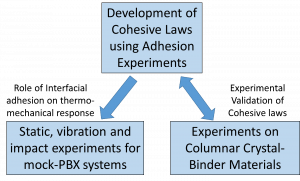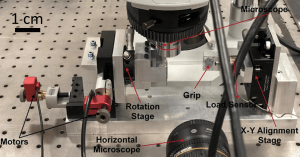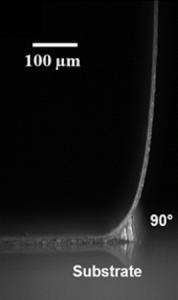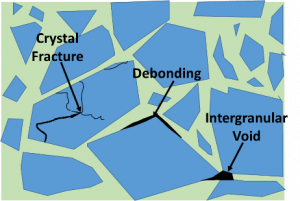Tunable Dissipation in Adaptive Granular Crystals using External Fields
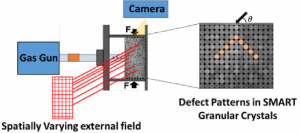 Schematic Design for Tunable Granular Device
Schematic Design for Tunable Granular Device
Granular crystals exhibit highly nonlinear impulse responses and are therefore excellent candidate materials for applications such as vibration absorption, impact mitigation and shock protection. The structure of traditional granular crystals can be optimized for some limited tunability. The goal of this project is to build and integrate fundamental knowledge about dissipative phenomena and defect interactions in dry or immersed granular crystals to aid the development of a novel class of tunable granular metamaterials. The technological capability to control the wave motion could lead to the design of granular devices. For example, a tunable granular shock protection device could easily adapt its defect structure to dissipate the wave generated from ballistic impact based on basic sensor measurements, such as amplitude, velocity and angle of the incoming impulse.
Influence of Interfacial Adhesion on Mechanics of Polymer Bonded Explosives
This project is focused on the development of experimental techniques to quantify interfacial adhesion under different conditions and develop cohesive laws describing the interfacial adhesion for different crystal-binder interfaces. A novel miniaturized experimental setup capable of performing a peel test at different peel rates and temperature up to 150 °C at constant peel angles would be developed to experimentally quantify the interfacial adhesion between compliant viscoelastic elastomeric peel arms and rigid substrates. Cohesive models based on these adhesion measurements would then validated using the various macroscale experiments for model columnar polymer bonded sugar specimens.
Structural health monitoring for polymer bonded explosives using vibration measurements
Polymer bonded explosives (PBXs) have been employed in various commercial, defense and space applications such as demolition explosives, insensitive munitions and solid rocket propellants. Any damage in the PBXs can lead to formation of hot-spots near crack tips and lead to accidental explosions. Thus, it is critical to monitor the mechanical damage in PBXs to avoid accidental detonation. Since, mechanical damage also leads to change in the vibrational behavior of the PBXs, the goal of the proposed project is to develop a structural health monitoring scheme to measure damage in PBXs using vibration measurements. This work would be conducted in collaboration with Prof. Demetriou and his research group.


